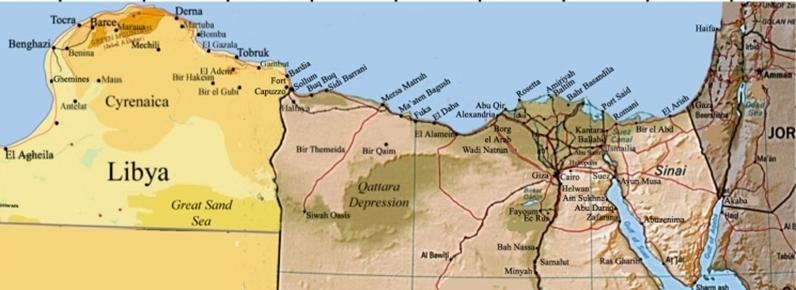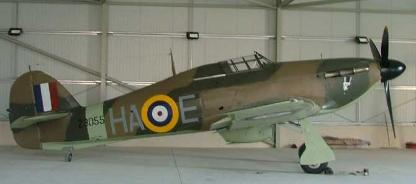
|
The Mediterranean Campaign |
|
In May 1941, the Squadron was withdrawn from the line in preparation for going overseas and embarked on the SS Almanzora at the end of the month. The ground crews reached Egypt early in July and, with the Squadron headquarters based at Kilo 17 Fayoum Road, various detachments co-operated in the formation of Maintenance and Repair and Salvage Units. The Squadron’s pilots, meanwhile, were operating in the defence of Malta, first as No 46 Squadron, but later being absorbed into No 126Squadron. They were in action continuously, claiming the destruction of nearly 40 enemy aircraft, 10 of them German and the remainder Italian. In May 1942, the Squadron moved to Idku and began reforming as a night fighter squadron with Beaufighters for the air defence of the Eastern Mediterranean. The Squadron became operational once again at the end of the month and its main tasks were the interception of enemy reconnaissance and bombing aircraft, principally over Alexandria, and the escort of shipping convoys laden with supplies for Malta. At the end of October, following the 8th Army’s advance from Alamein, No 46 Squadron carried out many highly damaging attacks on the retreating enemy columns in the Mersa Matruh area. In November 1942, the Squadron was re-organised as a Coastal Command squadron and operated various detachments in Malta and Benghazi to cover particularly important convoys; in addition, ground targets in Africa and Sicily were strafed, and barges, trawlers and other small ships were successfully attacked along the Tripolitanian Coast with cannon and machine-gun fire. The New Year found the Squadron preparing to resume its original role as a night fighter unit and, at the end of January, 2 detachments left Idku, one for Tobruk, and the other for Abu Sueir; by the end of April, 2 more detachments were operating at St Jean and Bu Amud - with the most distant bases nearly 1000 miles apart, administration of the Squadron became very difficult, to say the least! Some out of the ordinary tasks came the Squadron’s way. On one occasion, the Bu Amud detachment searched and found a convoy of native troops who were lost in the desert and long overdue; on another, a grounded destroyer was located and given air cover until it could be re-floated. April 1943 was of interest when, for the first time in the war, a night fighter was controlled from a war ship - the Squadron’s Signals Officer, Flight Lieutenant Muir, a Canadian, having devised a homing beacon for use on the controlling ship. In July, with the score of confirmed “kills” for one year’s operations in the Middle East standing at 31, the Squadron played an important if unexciting part in the shepherding of the invasion armada sailing for Sicily. The end of August found a large detachment of No 46 Squadron stationed in Cyprus with the main task of undertaking night intruder operations over Rhodes. On 14 September, Squadron Leader Cuddie, in command of the detachment, landed on the recently seized Dodecanese Island of Cos - the first Allied aircraft to do so; less than 3 weeks later, however, the Germans invaded and No 46 Squadron lost its CO, Wing Commander G A Reid, whilst bombing and strafing the invasion force. In the early months of 1944, with detachments operating from Abu Sueir, St Jean and Tocra, night intruder patrols over Rhodes, Cos and Crete formed the backbone of the Squadron’s activities. Many of these patrols bore fruit, for, in February and March, the Squadron claimed the destruction of 5 Junkers 52s and the probable destruction of 3 more. April and May were very quiet, despite the dove-tailing of patrols with No 252 Squadron over the Islands, giving complete coverage from dusk to dawn. The next few months brought better fortune, particularly in September, when the Squadron’s aircraft were controlled by HMS Ulster Queen, a GCI ship, and the score for the month amounted to 11 enemy aircraft destroyed. On 26 September to 11 October (full moon period) a detachment was established at Gambut.Click here to read a fascinating personal recollection of the detachment by one of the Squadron's pilots. Click here to read a Luftwaffe's pilots recollection of the same operation. This short period was probably one of the most glorious in the squadron's history with an outstanding record of 16 aircraft destroyed with 1 probable and 4 damaged. No less than 4 squadron members were decorated for their part: Warrant Officer Roy Butler (pilot) DFC (5 planes destroyed). A Ju52 destroyed by the Gambut detachment on 3 October proved to be the last enemy aircraft destroyed by the Squadron and, with the withdrawal of German forces from Greece almost completed, the Squadron’s duty of night fighter defence of Egypt had been discharged. |

|
Z3055, the eight gun Hurricane IIA of No.46 Squadron, exhibited (under construction) at the Malta Aviation Museum, took off from Safi strip just before daybreak on 4 July 1941. For some unknown reason (thought to be engine fire), the pilot, Sgt. Thomas Hackston, crashed into the sea and was killed. The Merlin XX powered aircraft, one of forty-two Hurricanes delivered to Malta (Operation Rocket) had flown off the carrier H.M.S. Ark Royal, barely a month earlier.
|
|
The following pages of the Mediterranean Campaign have been copies from the Squadron’s scrapbooks and from personal photo albums |
|
No 46 Squadron Bases in North Africa |
|
46 Sqn en-route to Africa |





